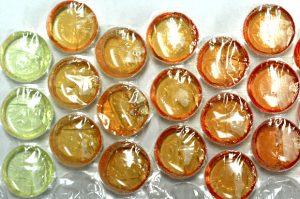If you’re like me, then the best thing about moving house or about receiving something vaguely fragile in the post, is the bubble wrap! For the best possible stress relief, I have even been known to dance on a sheet of it, popping and bursting bubbles with every step.
BUT it seems that there could be a far better use for this common material; Scientist George Whitesides and his colleagues explain that it can be used as a sheet of small, test tube-like containers for medical and environmental samples. Their report, which shows that analyses can take place in the actual bubbles, appears in the ACS journal Analytical Chemistry.
 Although bubble wrap filled with biological samples, like blood or urine, or chemicals would have to be handled carefully, the material offers numerous advantages for those living in resource-limited areas. The material is available almost everywhere around the world, is inexpensive, doesn’t generate sharp edges when broken (like glass containers), is easily disposed of by burning and is flexible. The interiors of the bubbles also are sterile, so there’s no need for costly autoclaves that have to be plugged in — a huge plus for the nearly 2 billion people around the world who do not have regular access to electricity.
Although bubble wrap filled with biological samples, like blood or urine, or chemicals would have to be handled carefully, the material offers numerous advantages for those living in resource-limited areas. The material is available almost everywhere around the world, is inexpensive, doesn’t generate sharp edges when broken (like glass containers), is easily disposed of by burning and is flexible. The interiors of the bubbles also are sterile, so there’s no need for costly autoclaves that have to be plugged in — a huge plus for the nearly 2 billion people around the world who do not have regular access to electricity.
To show that their idea could work, the team injected liquids into the air-filled pockets of bubble wrap with syringes and sealed the holes with nail hardener. They successfully ran anemia and diabetes tests on the liquids. They also could grow microbes such as E. coli in the blisters, which is important for detecting contamination in water samples. “The bubbles of bubble wrap, therefore, can be used for storing samples and performing analytical assays, a function that has the potential to be especially beneficial in resource-limited regions, and in very cost-sensitive applications,” they conclude.
Journal reference: David K. Bwambok, Dionysios C. Christodouleas, Stephen A. Morin, Heiko Lange, Scott T. Phillips, George M. Whitesides. Adaptive Use of Bubble Wrap for Storing Liquid Samples and Performing Analytical Assays. Analytical Chemistry, 2014; 140716083726003 DOI: 10.1021/ac501206m
Original article from www.sciencedaily.com based on material supplied by provided by American Chemical Society.




